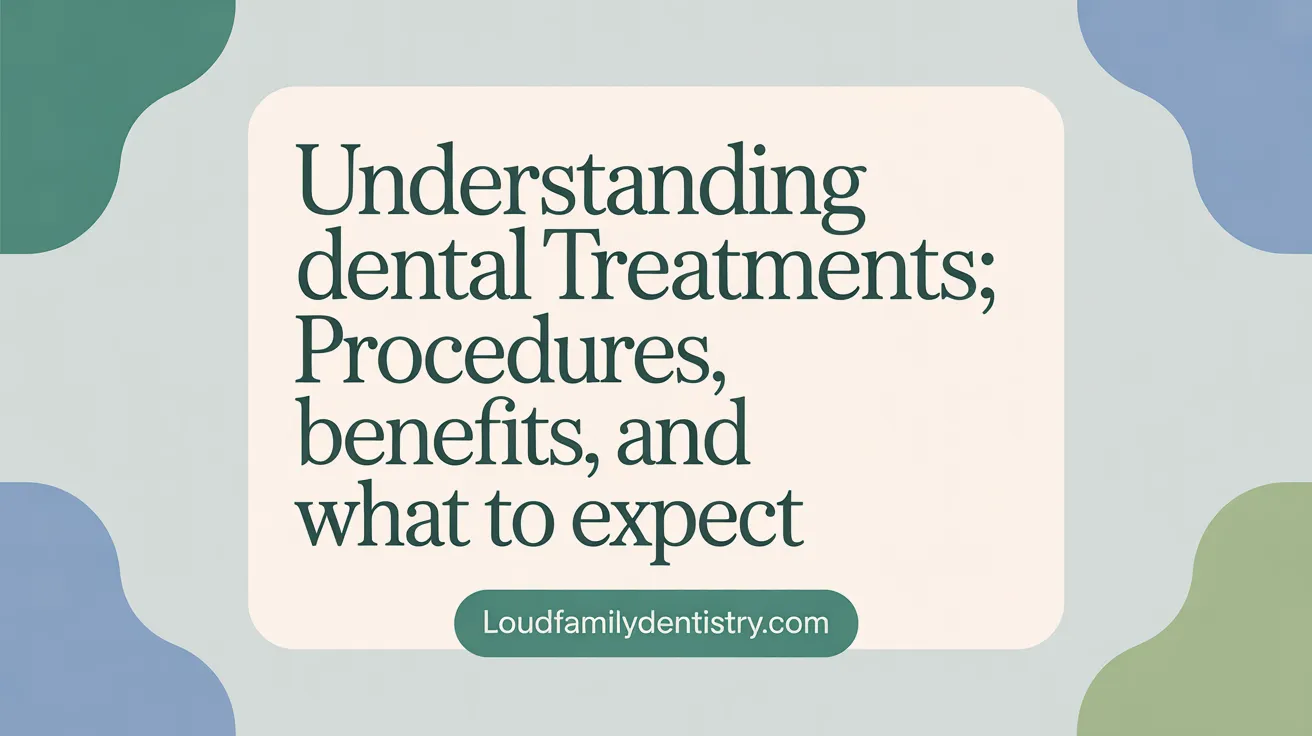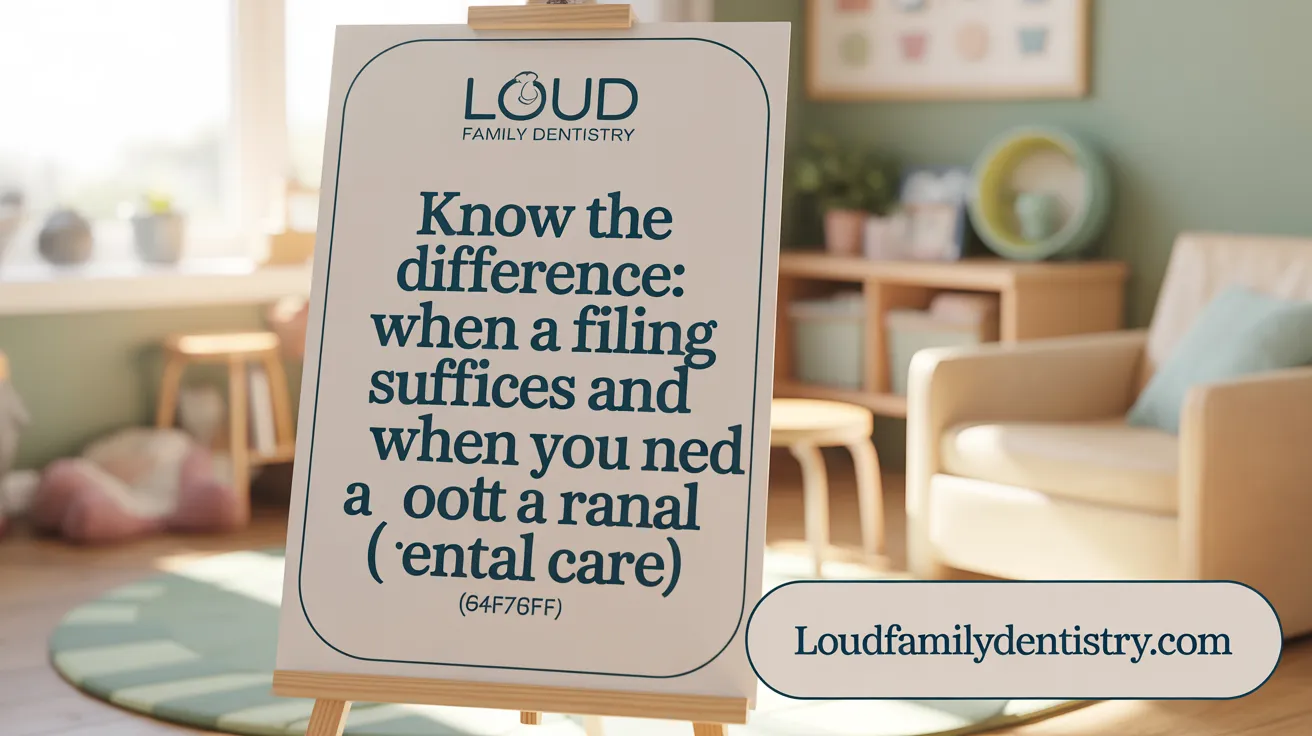Why Some Toothaches Demand More Than Just a Filling
Tooth pain can be unsettling and may signal a range of dental issues — from minor cavities to serious infections. Determining when a root canal is necessary can save your natural tooth and prevent further complications. This article explores the key signs and symptoms indicating root canal treatment, what the procedure entails, how it differs from other treatments, and how modern dentistry has made this once-feared process nearly painless.
Recognizing the Signs: When Tooth Pain Signals a Need for a Root Canal

Symptoms indicating root canal necessity
Recognizing the signs that suggest you may need a root canal is crucial for timely dental care. Major indicators include persistent, severe tooth pain that might interfere with sleep or daily activities. Pain when biting, chewing, or applying pressure is also significant. Swelling around the affected tooth, tender or with abscesses, points to infection needing attention. Discoloration, such as a gray or black tint, may signal internal damage or infection, while prolonged sensitivity to hot or cold drinks and foods is another warning sign.
Differences between common toothaches and infection-related pain
Many people experience toothaches, but not all are caused by infections requiring root canals. Typical toothaches from cavities can be dull and sporadic, whereas infection-related pain tends to be sharper, more persistent, and often throbbing. It usually worsens with hot, cold, or pressure stimuli. Infection pain often radiates to nearby areas like the jaw, ear, or neck, indicating deeper issues.
Significance of swelling, discoloration, and temperature sensitivity
Swelling in the face, gums, or neck can be a clear sign of an active infection that requires urgent treatment. Tender spots or pus drainage further emphasize this. Discoloration of the tooth, especially if it darkens quickly, suggests internal decay or bleeding within the pulp. Temperature sensitivity—discomfort that persists after the hot or cold stimulus is gone—may indicate nerve damage or infection, signaling the need for intervention.
When pain stops but infection persists
A common misconception is that absence of pain means everything is fine. However, a tooth that needs a root canal might suddenly stop hurting. This occurs when the infection destroys the nerve tissue, rendering the nerve dead. While the pain subsides, the infection can continue to spread, potentially leading to abscesses or systemic health issues. Prompt dental consultation is essential upon any sudden loss of tooth pain, as ongoing infection can cause serious complications if left untreated.
| Sign or Symptom | What It Indicates | Recommended Action |
|---|---|---|
| Severe or persistent pain | Infection, nerve damage, or deep decay | Visit a dentist promptly |
| Swelling or abscess | Active infection needing treatment | Seek immediate dental care |
| Tooth discoloration | Internal damage or infection | Dental evaluation recommended |
| Sensitivity to hot/cold | Possible nerve irritation or damage | Dentist assessment advised |
| Pain stops unexpectedly | Dead nerve, ongoing infection | Urgent dental consultation needed |
Awareness of these signs can help prevent the progression of dental infections and preserve natural teeth. Remember, even if pain diminishes, the problem might not be resolved. Regular dental check-ups and timely treatment can save a tooth from extraction and future complications.
The Root Canal Procedure: What It Involves and Its Benefits

What is the root canal procedure and what are its benefits?
A root canal treatment is a dental process designed to save a tooth that has become infected or inflamed in its inner pulp chamber. The pulp contains nerves, blood vessels, and soft tissue, which can be damaged due to deep decay, cracks, or repeated dental procedures. During the treatment, the dentist or endodontist numbs the area with local anesthesia to ensure comfort.
The process begins with creating a small opening in the tooth to access the pulp. Infected or damaged tissue is carefully removed, and the inside of the root canals is thoroughly disinfected. These canals are then filled with gutta-percha, a rubber-like material, to seal them and prevent future infection.
Once the canals are sealed, the tooth is restored with a filling. Often, a crown is placed about a week later to strengthen the tooth, restore its function, and improve its appearance.
Modern root canal treatments are typically painless, thanks to advanced anesthesia and techniques. Most procedures can be completed in one or two visits, making it a convenient option.
The benefits of a root canal are significant. It preserves your natural tooth, maintains proper biting and chewing ability, and prevents the need for more invasive procedures like extraction followed by implants or bridges. Saving the tooth also maintains facial structure and prevents shifting of adjacent teeth.
Moreover, the success rate of root canal therapy is very high — around 99.3%. With proper care, a root canal-treated tooth can last a lifetime. It’s a cost-effective way to maintain oral health, avoid complications, and ensure long-term dental vitality.
In essence, a root canal not only relieves pain and removes infection but protects your natural smile and function, supporting overall health and confidence.
Addressing the Pain Myth: How Painful Is a Root Canal Really?

Is root canal treatment painful?
Modern root canal treatments are generally not painful thanks to the use of advanced anesthesia, making the procedure comparable in discomfort to getting a cavity filled. During the treatment, most patients experience only mild soreness or pressure rather than pain. Any discomfort after the procedure is usually mild and easily managed with over-the-counter medications.
Contrary to old myths, root canals do not cause systemic illnesses or involve removing the roots of the tooth. Instead, only the infected pulp inside the tooth is removed. While some residual discomfort might occur, severe pain after a root canal is uncommon and often signals the need for further dental evaluation.
Thanks to modern techniques, a root canal is a safe and relatively painless procedure that effectively alleviates tooth pain caused by infection. This modern approach has transformed root canal therapy into a comfortable treatment option for most patients.
How painful is a root canal on a scale of 1 to 10?
During the actual procedure, patients typically rate their pain at between 0 and 3 out of 10, feeling mainly pressure rather than pain thanks to effective local anesthesia. Much of the initial discomfort or pain—intense and ranging from 6 to 10 on the scale—is usually caused by the infection, swelling, and pressure that prompted the need for treatment.
After the procedure, mild to moderate soreness, rated between 2 and 5, is common and typically subsides within a few days with proper pain management. Thanks to advances in dental technology, a root canal is often no more painful than a routine filling, with its primary goal being to relieve existing pain. Overall, most patients find root canal therapy to be a minimally painful process that provides significant relief.
What are common side effects of root canal treatment?
After a root canal, some common side effects can include mild pain, swelling, and sensitivity around the treated tooth that usually last a few days. Temporary numbness or tingling may also occur due to local anesthesia used during the procedure.
In rare cases, allergic reactions to materials used during treatment, such as latex or certain medicaments, may occur, presenting as itching, swelling, or breathing difficulties. The weakened tooth might be susceptible to cracking or fracture if not properly restored, especially in molars.
Persistent infection or inflammation can also develop if bacteria are not completely eliminated. Following proper aftercare instructions and seeking medical attention for severe symptoms—like intense pain, significant swelling, or signs of allergic reactions—can help ensure a smooth recovery and prevent complications.
In summary, while mild side effects are common, severe or lasting problems are rare with proper dental care and attention.
| Aspect | Typical Experience | Management Tips | Additional Details |
|---|---|---|---|
| Pain during treatment | Usually 0 to 3 out of 10; feels like pressure | Use of local anesthesia ensures comfort | Modern techniques make procedure virtually painless |
| Post-treatment discomfort | Mild to moderate; pain scale 2 to 5 | Over-the-counter pain relievers | Usually subsides within a few days |
| Swelling and inflammation | Mild swelling common, resolves with care | Keep head elevated, cold compresses | May involve tender gums or facial swelling |
| Allergic reactions | Rare; itching, swelling, breathing problems | Inform dentist of allergies | Materials used are typically biocompatible |
Differentiating Between a Root Canal and a Filling: When to Seek Expert Diagnosis

When are fillings sufficient versus when is a root canal necessary?
In cases of minor decay or small cavities, a simple filling is often enough to restore the tooth. Fillings involve removing the decayed part of the tooth and sealing it, preventing further damage. However, if decay is extensive or reaches the pulp—the soft tissue inside the tooth—more advanced treatment called a root canal may be required. Symptoms like persistent pain, swelling, or discoloration suggest deeper infection, indicating that the pulp has been affected.
How do diagnostic methods like X-rays help?
Dentists rely heavily on diagnostic tools like X-rays to assess the extent of damage or infection. X-rays provide detailed images of the internal structure of the tooth, revealing decay that may not be visible during a visual exam. They help determine whether the pulp is affected and guide the decision between a filling or a root canal.
What are the indicators that show whether you need a root canal or just a filling?
Signs that suggest a root canal include severe, lingering pain, especially during biting or when exposed to hot or cold temperatures. Swelling, tooth discoloration, and tenderness in the gums are also common indicators. If the pulp has been exposed or infected, treatment extending beyond a filling is necessary. In contrast, minor decay without symptoms usually only requires a filling.
Why is professional assessment crucial?
Only a dental professional can accurately evaluate your condition through thorough examination and diagnostic imaging. Attempting to diagnose or treat dental issues without expert input can lead to inadequate treatment, worsening infection, or unnecessary procedures. Proper diagnosis ensures you receive the appropriate intervention—whether a simple filling or a root canal—and helps prevent future complications.
What happens if treatment is delayed?
Delaying necessary treatment can lead to the progression of infection, increased pain, and potential damage to surrounding tissues. An untreated infected pulp might cause an abscess or spread infection, which can compromise overall oral health and, in some cases, impact systemic health. Timely professional evaluation and treatment are essential to save the tooth and maintain your health.
Preventive Measures and Long-Term Care to Avoid Root Canals
 Maintaining good oral hygiene is vital in preventing the types of dental problems that can lead to root canals. Brushing twice daily with fluoride toothpaste and flossing regularly help remove plaque and bacteria, reducing the risk of cavities and pulp infection.
Maintaining good oral hygiene is vital in preventing the types of dental problems that can lead to root canals. Brushing twice daily with fluoride toothpaste and flossing regularly help remove plaque and bacteria, reducing the risk of cavities and pulp infection.
Regular dental visits—at least twice a year—allow professionals to detect early signs of decay, cracks, or other issues before they progress to needing root canal treatment. Early intervention can often prevent more extensive damage.
Protective measures such as wearing a mouthguard during sports or other physical activities can prevent trauma that might crack or chip teeth. Avoiding habits like chewing ice, hard candies, or biting on very hard objects also reduces the risk of damaging the tooth enamel and pulp.
Managing stress and avoiding grinding or clenching your teeth—especially at night—through mouthguards or relaxation techniques can prevent cracks or fractures in your teeth.
Finally, adopting strategies for long-term tooth preservation, like addressing early decay with minimally invasive treatments and sealing tiny cracks, can extend the life of your natural teeth. These practices collectively lower the chances of infections that require root canal procedures.
By following these preventive tips, you can significantly reduce the likelihood of needing a root canal, preserving your oral health and maintaining your natural smile.
For more information on protecting your teeth, search for "Prevention of root canal through dental care."
Root Canal Therapy: A Reliable Solution for Saving Your Tooth
Root canal treatment remains one of the most effective options for addressing severe tooth pain and infections that threaten the health of your natural teeth. Recognizing symptoms such as persistent pain, swelling, and sensitivity is crucial to seeking timely care. Thanks to modern dental advances, root canals are now virtually painless and help preserve the function and appearance of your teeth while preventing more invasive and costly procedures like extractions and implants. Maintaining good oral hygiene and regular dental visits are key to minimizing the risk of needing a root canal. Ultimately, understanding when a root canal is necessary empowers you to make informed decisions to protect your oral health and keep your smile intact for years to come.
References
- Myths About Root Canals - American Association of Endodontists
- 3 Signs You Need a Root Canal | Lindemann RCS
- Why Root Canal Treatment Might Be Your Best Option for Saving a ...
- How a Root Canal Can Stop Your Pain - Dental Associates of Florida
- Do I Need a Root Canal if My Toothache Has Gone?
- When a Root Canal Is the Best Option: What to Expect from Your ...
- Do You Need A Root Canal? - Finger Lakes Dental - New York
- Why Choosing a Root Canal is Better Than Tooth Extraction
- My Tooth Hurts: Do I Need a Root Canal? - Pickfair Family Dental
- The Root Canal: Is It the Best Option or Is There Another Way?
